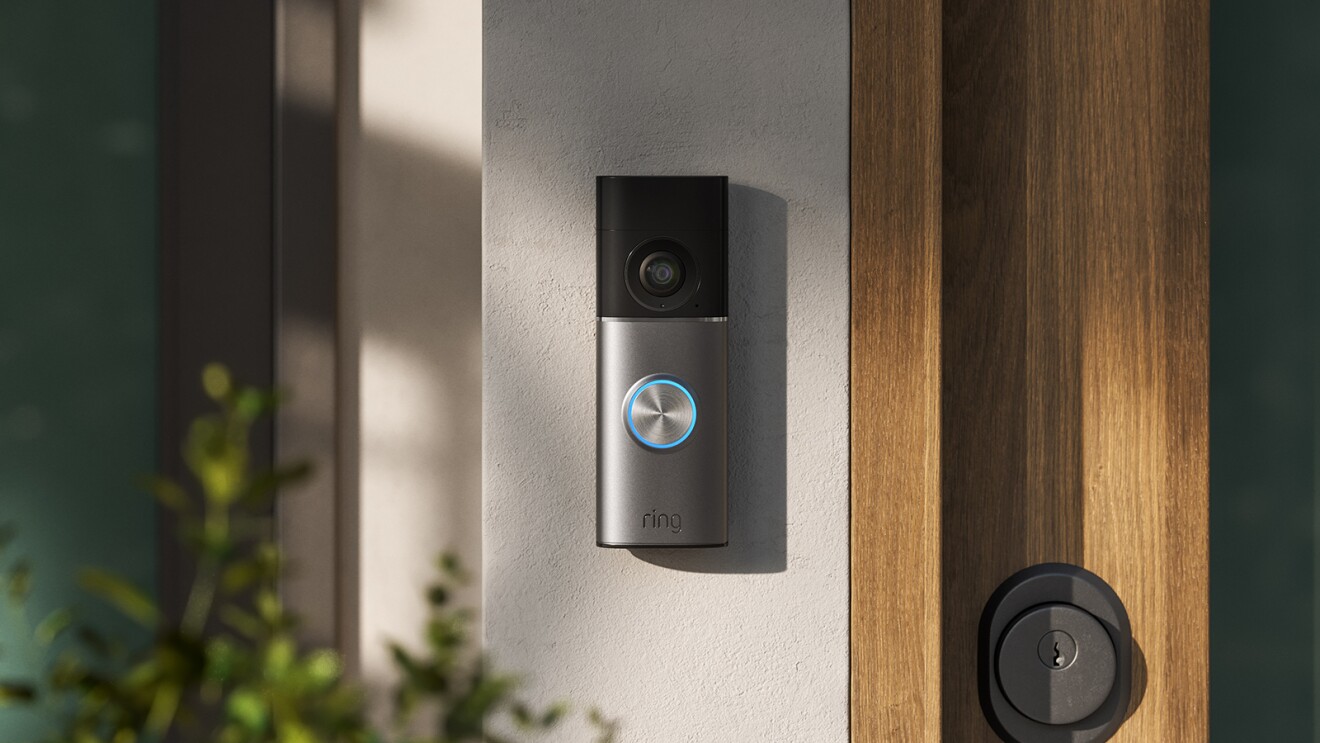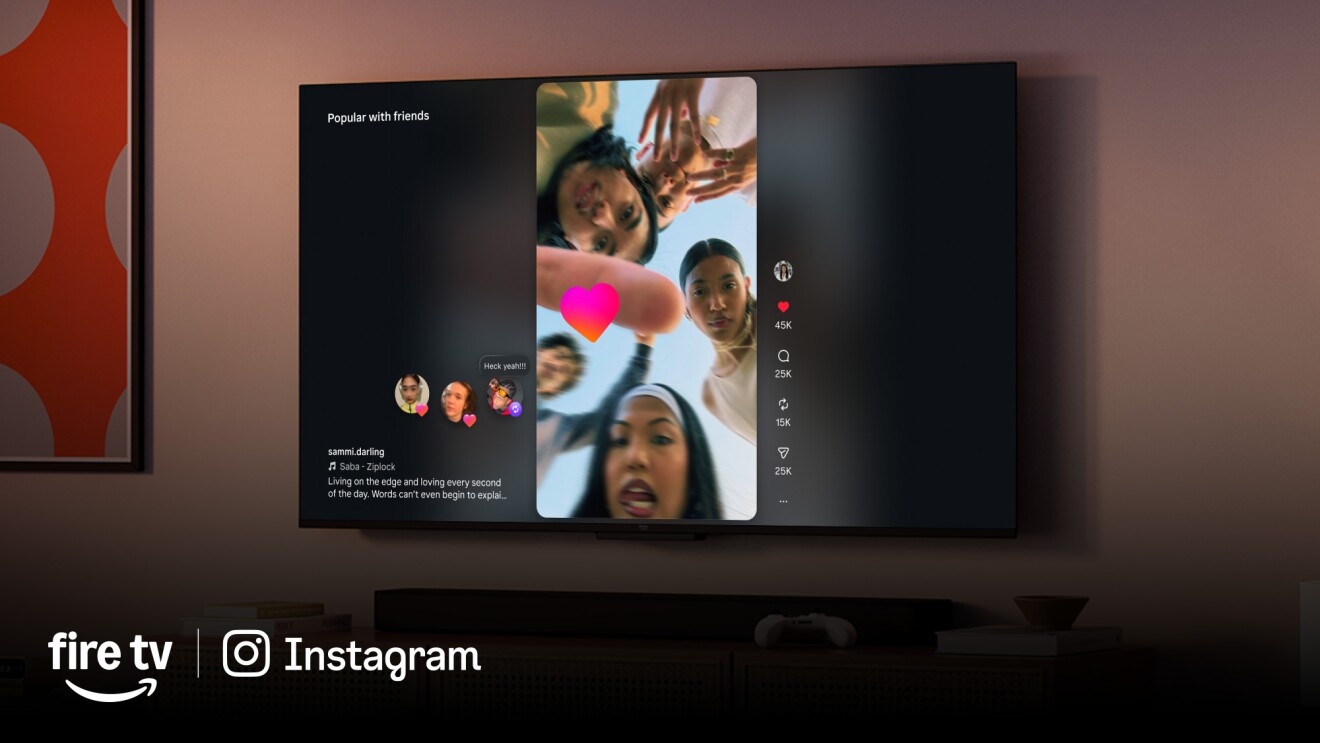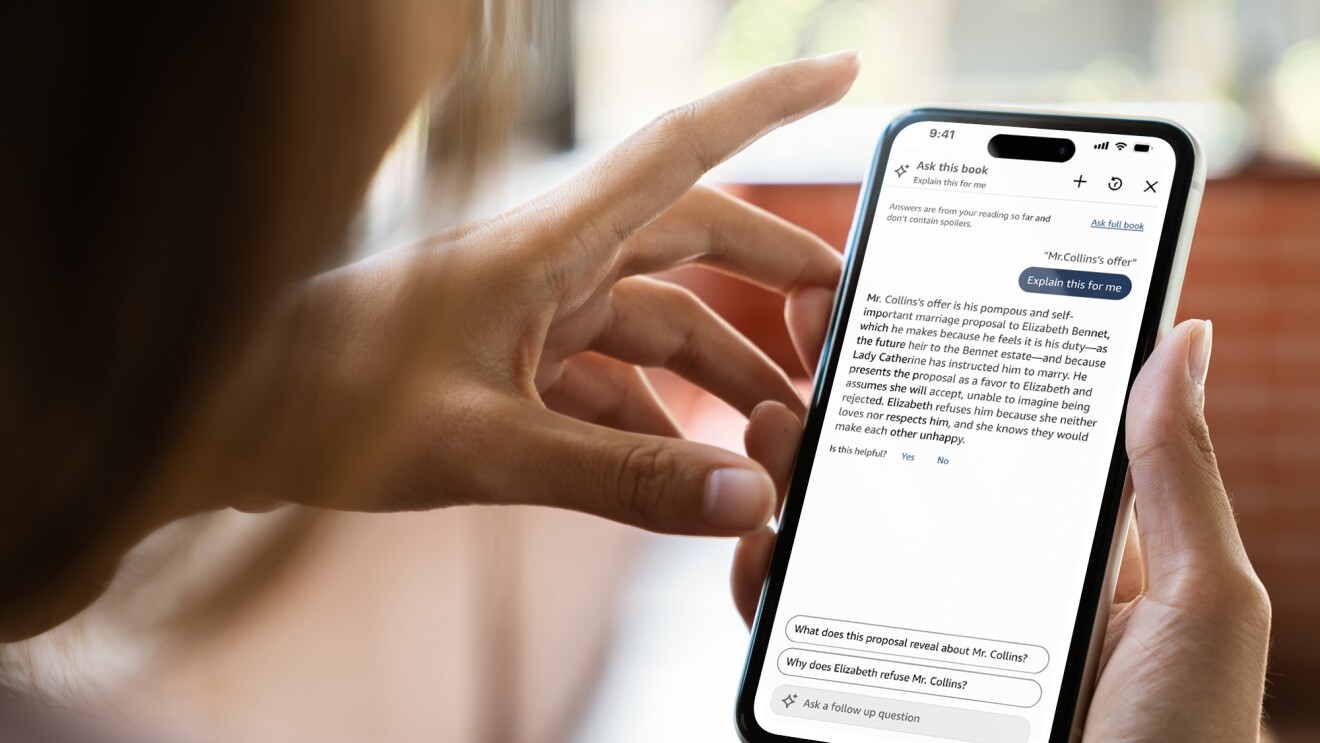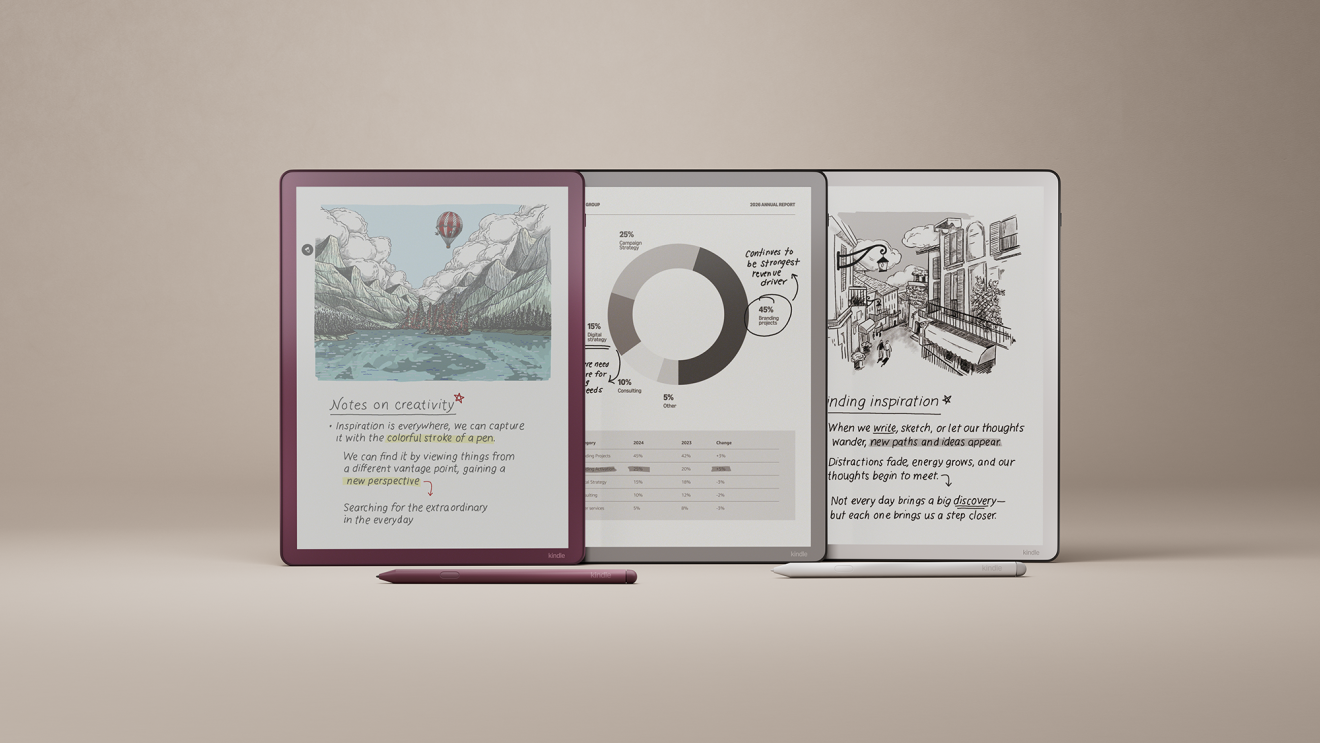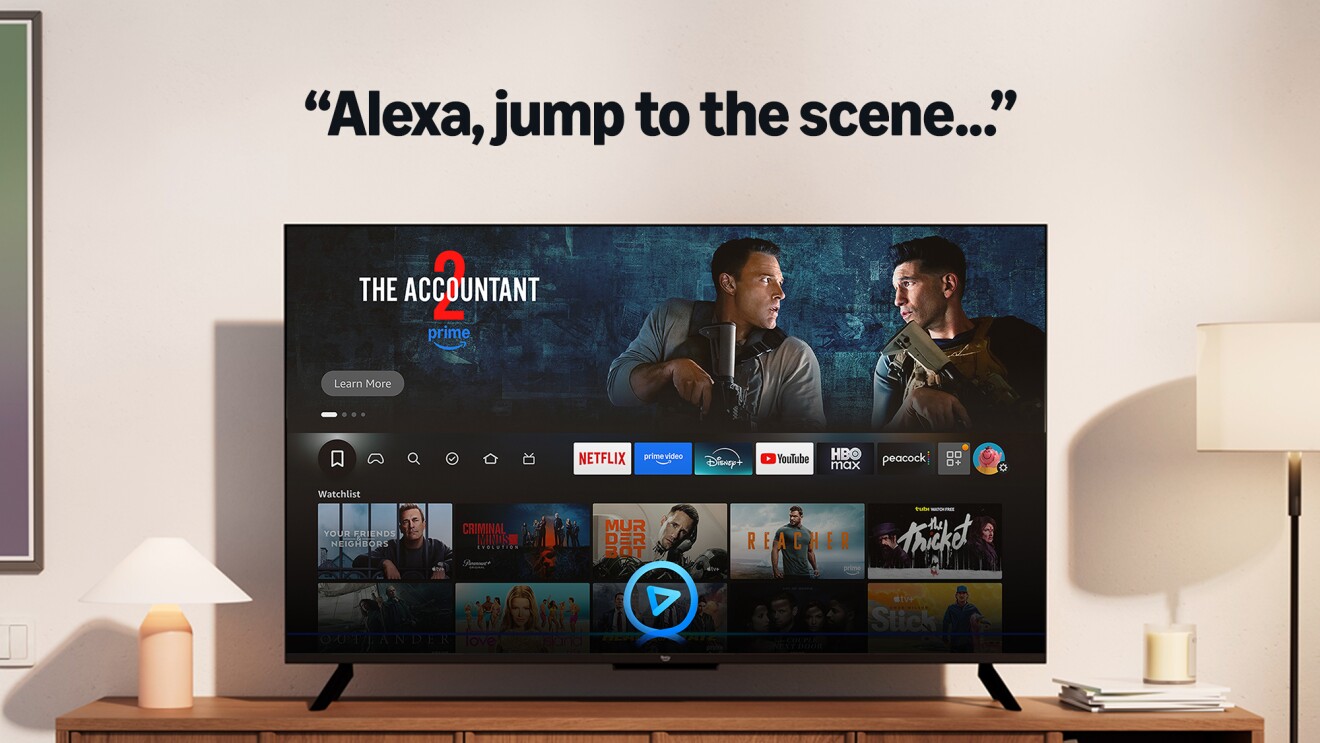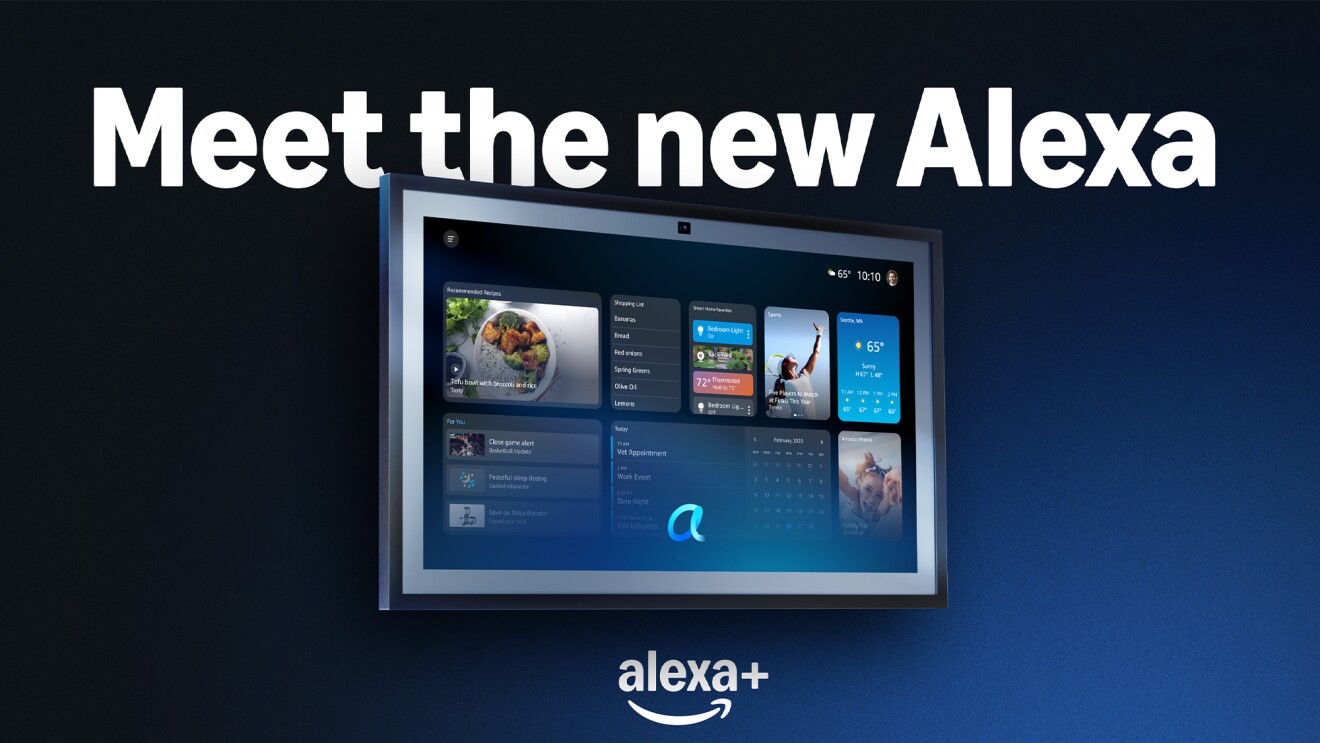Some might say that if Alexa was destined for space, Justin Nikolaus was destined to help.
Nikolaus, a senior UX designer on the Alexa Voice Service team, has spent the past three years making sure Alexa is ready for space as part of Artemis I, the first of several planned NASA missions to the Moon.
For Alexa, which was inspired in part by the talking computer in the original Star Trek TV series, it’s a natural progression. For Nikolaus, a lifetime space enthusiast, it’s a dream fulfilled.
Recently, we spent time with Nikolaus to learn more about this project, as well as his own personal journey and passions.
Tell us about your own Amazon journey.
I joined Amazon over five years ago and have helped more than 30 partners—including Sonos, Ford, and Bose—integrate Alexa into their devices. I’ve also spent a few years working on the foundation of Alexa behaviors and visuals on our own Echo and Echo Show devices. Currently, I’m focused on creating bar-raising voice experiences for our customers on Earth and in space.
Tell us more about this project and sending Alexa to space.
I’ve personally been working on this project for the last three years. It’s a collaboration with Lockheed Martin to integrate Alexa into the crew cabin of NASA’s Orion spacecraft for Artemis I. While this first mission, expected to launch this spring, is uncrewed, it is helping NASA test technology that could be used in future crewed missions to the Moon and other space destinations.
Our team has been working on features an astronaut might need during a mission. The first is access to mission telemetry, and that requires the ability to answer questions like, “Alexa, how fast is Orion traveling?” or “Alexa, what’s the temperature in the cabin?” The second is the ability to control connected devices onboard the spacecraft, such as in-cabin. The last is ensuring Alexa can retrieve information from back on Earth, like news briefings or sports scores, helping astronauts stay connected to home during long missions to deep space. Lockheed Martin made the custom, space-grade hardware with Alexa built-in, and the Amazon team handled all of the acoustic, audio-processing, and software work required to bring the experience to life.

The 'Star Trek' computer was part of the original inspiration for Alexa—is this project an example of the team bringing this vision to fruition?
Absolutely! We want everyone to be able to use Alexa everywhere, and Alexa in space is an exciting next step. It shows that Alexa can be helpful in yet another environment outside the home, and there’s no place more challenging than space. There are no guarantees of what happens next, but we’re already seeing how Alexa can potentially help astronauts and others in mission control—making missions simpler, more efficient, and more enjoyable for those onboard.
The technology we are building for this project will have applications on Earth, too. For example, the Alexa integration onboard uses our Local Voice Control technology, which allows Alexa to function in areas with limited-to-no connectivity, and the learnings here will help Alexa work better in cars and other remote environments. This isn’t a new idea—in fact, Velcro was created for the Apollo mission.
What are some of the biggest challenges your teams faced, and how did you overcome them?
First, this is a new domain for Alexa, so as a user-experience designer, I needed to dive deep and research everything there is to know about using voice in space and how we can help future astronauts. I got to talk with multiple astronauts about their jobs and uncover what mission-specific information and features would be most helpful for them. I also traveled to NASA’s facilities in Houston and brainstormed with their flight controllers and directors to ensure the experiences we were building were both relevant and accurate.
Second, as you can imagine, space isn’t an easy environment to work in. You’re dealing with shock and vibration, radiation exposure, weight limits, and the unique acoustic properties of an enclosed metal crew-cabin traveling through space. Our team of engineers had to research the acoustic properties of the cabin and understand the sound quality of an actual spacecraft in flight. Lockheed Martin played a huge role here, given their long history of building hardware for space. That gave us a solid platform where we could apply our expertise in voice technology and AI.
Lastly, this was a huge project with lots of ambiguity. There are so many aspects of this project that we’ve never done before—from user experience and marketing to building with space-grade materials. It’s been very exciting to take on a variety of tasks and tackle these new challenges. For example, one week I’m working on the industrial design of the speaker grill and light ring, and the next week I’m defining the response logic for reading the telemetry values coming back from flight software.
It’s been a long and challenging project, but the team has done an incredible job inventing and executing.
How can customers experience Alexa in space?
Alongside the upcoming Artemis I mission, Alexa-enabled devices on Earth will be able to provide customers with in-depth information on Artemis I, such as telemetry data from the Orion spacecraft; videos and imagery from the mission, including a launch livestream; video of virtual crew interactions from Johnson Space Center, and reminders and notifications about key milestones in the mission. The new Artemis features for Alexa will launch closer to the mission, but a preview is available now. Just say, “Alexa, take me to the Moon,” or check out www.amazon.com/alexainspace.
We understand in your free time you create space-themed comics for your kids. Tell us more about that.
Space has always been a passion of mine, so when I was approached to work on this project, I jumped at the opportunity. Storytelling with visuals, such as wireframes and storyboards, is a natural part of my job to remove ambiguity, but I’m always looking for new, fun ways to keep my creative skills sharp. When my son, who is also very into space, headed to his first day of preschool, I decided to put a small drawing of an astronaut in his lunchbox and he absolutely loved it. Now, I have two sons, ages 2 and 4, and have created over 400 drawings for their lunches. Even when I head down to Houston for work, I draw a few before I leave so they always have a smile for lunch.
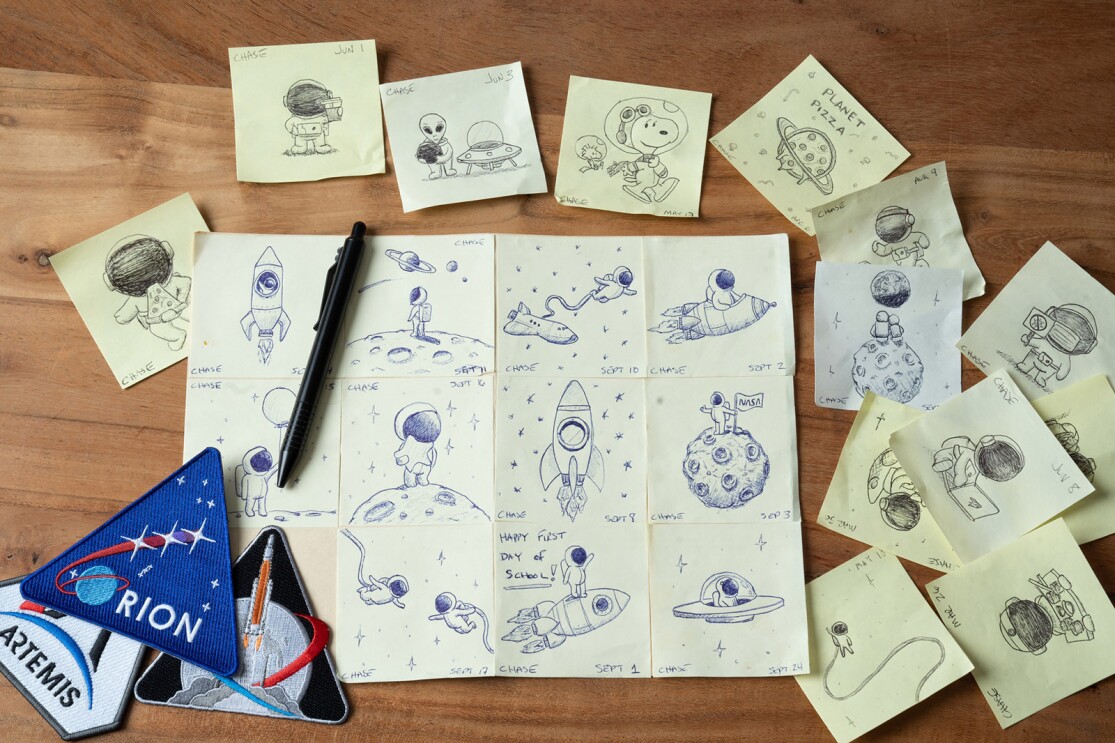
Tell us more about your background.
In college, I studied both graphic design and computer science. I have always been drawn to the intersection of art and technology and how it can be used to help and connect people. Before joining Amazon, I worked for a handful of companies, including Thomson Reuters, Target, and Microsoft. I also co-founded a small startup. One of our products enabled people to enjoy the photos taken at events like weddings without having to pull out their phone, by streaming them to big screens for everyone to enjoy. I’m originally from Wisconsin, but for the last nine years I have lived in Seattle with my wife and two sons. When I’m not reading up on the latest space tech, I’m out playing tennis, wine tasting, or at home putting our pizza oven to use.




